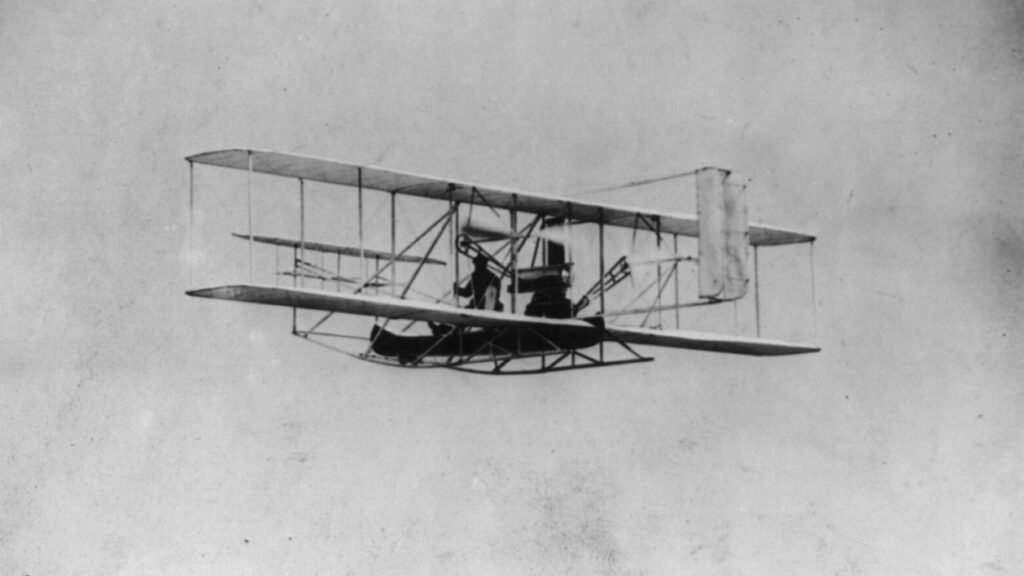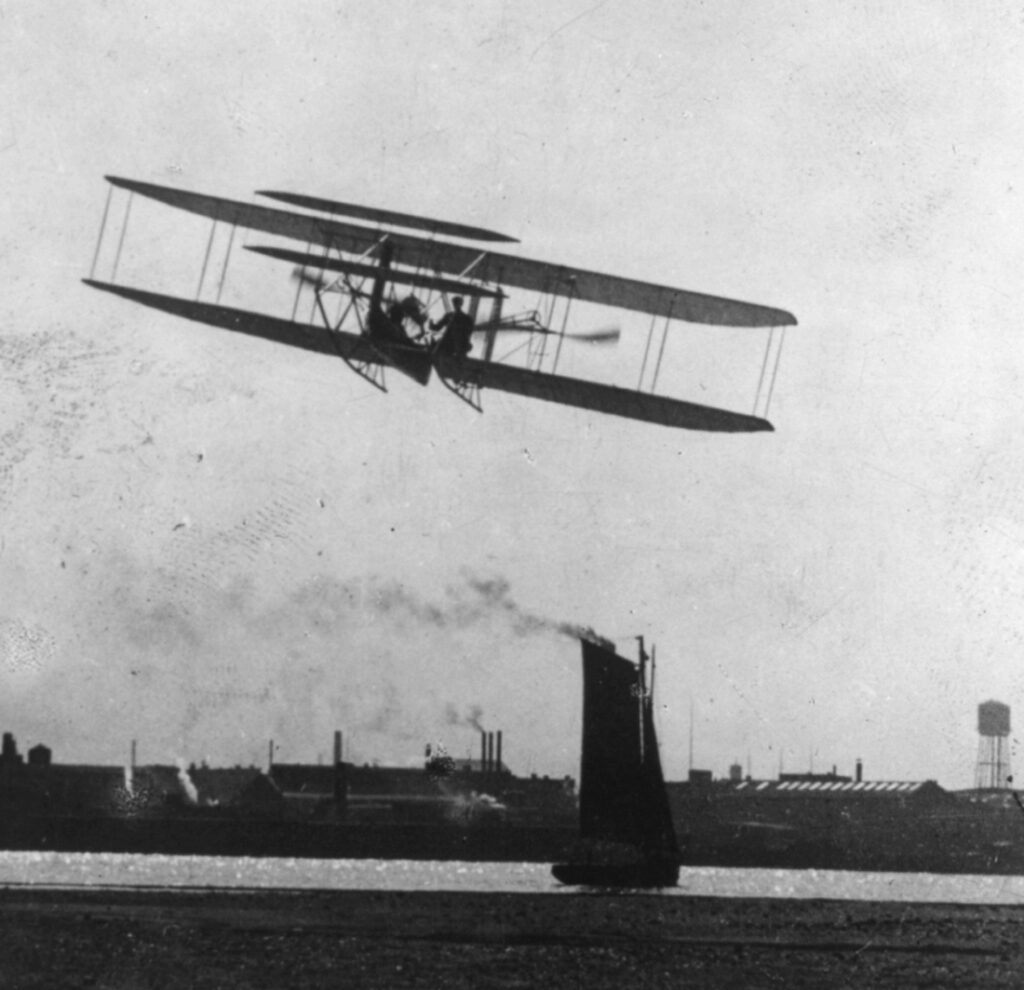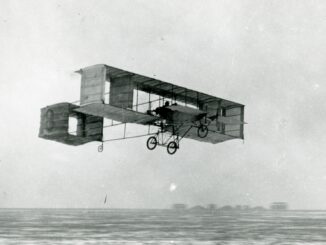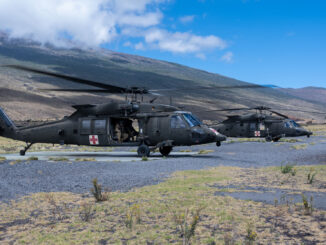 On 4th October 1909, Wilbur Wright performed a demonstration flight in New York, flying along the Hudson River, being witnessed by a crowd of more than one million people.
On 4th October 1909, Wilbur Wright performed a demonstration flight in New York, flying along the Hudson River, being witnessed by a crowd of more than one million people.
The flight was performed within a series of aviation displays ordered by the Hudson-Fulton Celebration Committee to mark the 300th anniversary of New York City history. An interesting fact was that the Committee asked both the Wrights and Glen Curtiss to make a series of celebration flights and the invitation came shortly after Orville and Wilbur Wright filled suit against Curtiss for patent infringement. The American press quickly took the matter up, turning the initially ordinary flying display into a duel between the two aviation pioneers.
At that time, Orville Wright was performing demonstration flights in Europe. Therefore, the celebration displays in New York were flew only by Wilbur. His first performance took place on 29th September in the morning, with a flight covering about two miles and lasting approximately seven minutes. Curtiss decided not to fly that day, due to windy conditions.

Later that day, Wilbur Wirght performed another flying display over New York harbour. The flight lasted about five minutes and was concluded by spectacular circle around the Statue of Liberty. It was quickly recognized by media as iconic event of aviation. Glenn Curtiss, still unable to fly due to the weather, left the scene and went to St. Louis.
On 4th October 1909, Wilbur Wright took-off for another display flight. He flew along the Hudson River to Grant´s Tomb and back. The flight lasted thirty-three minutes and covered a distance about twenty-one miles. This time, the Wright´s performance was witnessed by more than one million people gathered along the route.
Interesting fact is that, being afraid of flying over the river, Wilbur Wright used the first safety precaution in aviation history. It was a bright red canoe attached to the lower wing. The aviation pioneer hoped in case of emergency landing on water, the canoe would keep the aircraft afloat long enough for Wright to abandon it and swim away. In addition, he also took a life vest onboard.

Cover photo: Wilbur Wright in flight from Governor’s Island, New York (Library of Congress, LC-USZ62-78454)



